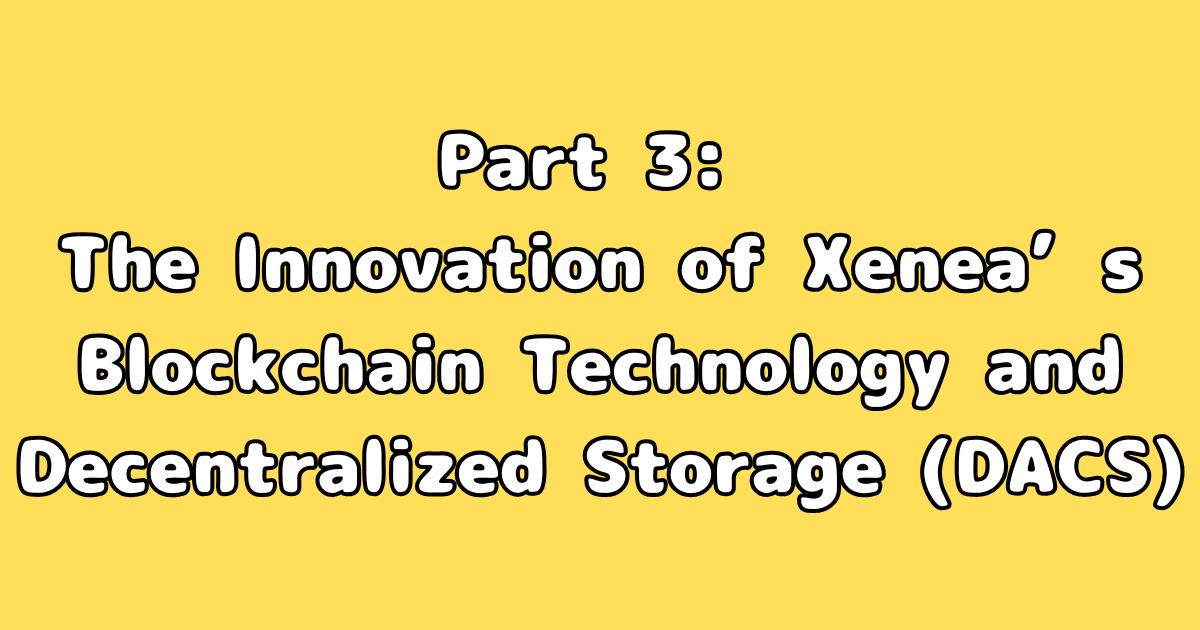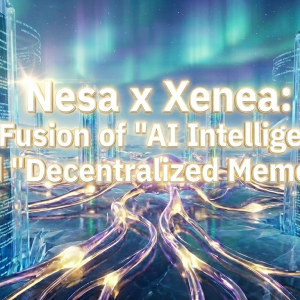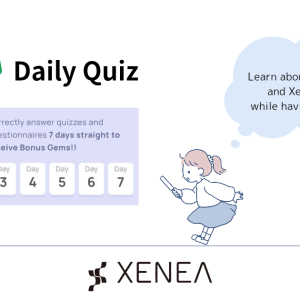Part 3: The Innovation of Xenea’s Blockchain Technology and Decentralized Storage (DACS)

Xenea is not just another blockchain project. It aims to become a true data infrastructure for the Web3 era by combining an unprecedented Layer 1 blockchain architecture with integrated decentralized storage called DACS (Decentralized Autonomous Content Storage).
This article will explain the core blockchain technology and DACS mechanism that define Xenea, highlighting how it differs from traditional storage and blockchain systems—in a way that’s easy for beginners to understand.
🔗 Xenea as a Layer 1 Blockchain
A Ground-Up Design
While Xenea is developed as an EVM-compatible Layer 1 blockchain, it is not a mere copy of Ethereum. Its entire architecture is built from scratch to ensure both high scalability and robust security, supported by technologies documented in peer-reviewed IEEE publications.
Key Features:
- EVM Compatible: Enables easy migration of Solidity-based dApps
- Proprietary Hash File System: Unifies transactions and data
- High Responsiveness: Optimized read/write speed via DACS integration
🧠 What is PoD (Proof of Democracy)?
A Democratic and Fair Consensus Algorithm
Conventional blockchains typically use PoW (Proof of Work), dominated by miners, or PoS (Proof of Stake), influenced by capital. In contrast, Xenea uses a unique consensus model called PoD (Proof of Democracy), where security is based on the number of participants.
Advantages of PoD:
- Open to all, regardless of financial resources
- Consensus formed through voting by Rep nodes
- More nodes mean greater security, making it scalable
This design truly embodies the Web3 ideals of decentralization and open participation.
📦 What is DACS? A Revolution in Decentralized Storage
Why Storage Matters
Most blockchains struggle to store not just transaction data but also application files and media (images, videos, etc.) on-chain. They typically rely on external services like IPFS or Arweave.
To fundamentally address this issue, Xenea integrates storage directly into its blockchain—this is what DACS is.
🛠 DACS Architecture and Advantages
1. Data Persistence and Instant Access
By embedding file hash information into blocks, DACS achieves both long-term storage and fast access.
2. Support for Dynamic Data
Unlike many decentralized storage systems that focus on static files, DACS can handle real-time updates needed for SNS and web services.
3. Seamless Integration with Smart Contracts
Data stored in DACS can be accessed directly by EVM-compatible smart contracts, enabling dApps to process data entirely on-chain.
🔐 Security Backed by Patented Technology
Beyond its technical architecture, Xenea uses patented technology for secure management of private keys. With the electronic voucher-based storage method, wallet data is split and distributed across multiple nodes.
Advantages include:
- Users don’t need to memorize private keys
- Minimizes risk of theft or loss
- Combines Web2-level usability with Web3-level security
🌐 How Xenea Differs from and Complements Other Chains
A Complementary Infrastructure
Xenea isn’t designed to compete with other Layer 1s like Solana or Avalanche, but to complement them.
- Other chains handle transaction processing
- Xenea ensures storage and data permanence
- Existing dApps can easily adopt Xenea’s DACS
Cross-Chain Compatibility
Future plans include bridges to non-EVM chains, enabling flexible infrastructure for omnichain dApps.
🚀 Public Mainnet with DACS Coming Soon
While the public testnet and node sales are ongoing, the official EVM-compatible mainnet with integrated DACS is scheduled for release in Q4 2025.
This mainnet will enable developers to fully deploy dApps on Xenea.
Key features include:
- Permanent on-chain data management
- Backend infrastructure for Web3 apps
- Tamper-resistant, fault-tolerant file sharing through DACS
Conclusion: Xenea is the “Heart of Information” in Web3
Xenea is not just about processing transactions—it handles storage, updating, and utilization of information in a unified system. By fusing blockchain with DACS, it is poised to become the new standard for data infrastructure in Web3.
Next (Part 4), we’ll explore the $XENE Tokens and Mining PoD (Proof of Democracy) Mechanism.


Comment